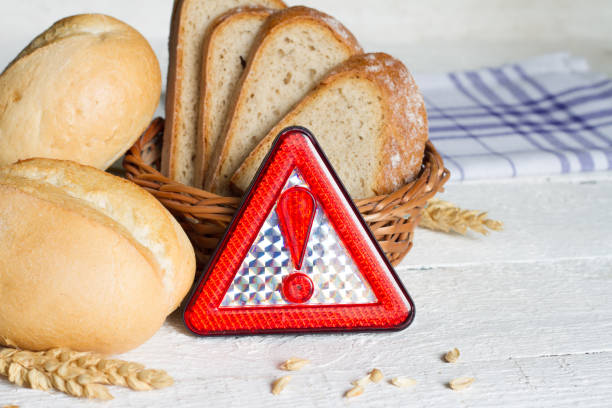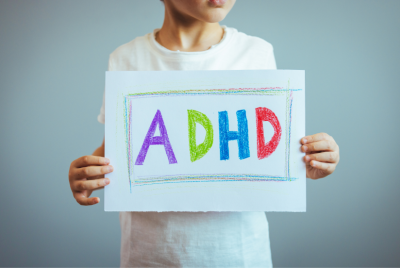Wheat Allergy: Understanding Symptoms, Causes, and Management
Introduction
Welcome to our informational blog, where we aim to provide you with valuable insights into various health conditions. In this article, we will delve into the topic of **wheat allergy**. If you or someone you know has experienced adverse reactions after consuming wheat or gluten-based products, this comprehensive guide will help you understand the symptoms, causes, and effective management strategies for wheat allergy.
Wheat Allergy: A Closer Look
Wheat allergy is a specific type of food allergy that occurs when the immune system reacts negatively to proteins found in wheat. When a person with gluten intolerance ingests wheat or inhales wheat flour, their immune system perceives the proteins as harmful invaders and triggers an allergic reaction. The body releases antibodies called immunoglobulin E (IgE), which then lead to the release of histamines and other chemicals, causing a range of symptoms.
Symptoms of Wheat Allergy
Wheat allergy can manifest with various symptoms, which can differ in severity from person to person. The following are common symptoms associated with wheat allergy:
-
Digestive Symptoms:
– Abdominal pain
– Diarrhea
– Nausea and vomiting
-
Skin-related Symptoms:
– Itchy skin (pruritus)
– Hives (urticaria)
– Eczema or atopic dermatitis
-
Respiratory Symptoms:
– Runny or stuffy nose
– Sneezing
– Wheezing or difficulty breathing
-
Anaphylaxis:
– Anaphylaxis is a severe and potentially life-threatening allergic reaction that requires immediate medical attention. Symptoms of anaphylaxis may include:
– Swelling of the throat or tongue
– Difficulty breathing
– Rapid heartbeat
– Dizziness or fainting
It is essential to remember that these symptoms may not appear immediately after consuming wheat. In some cases, symptoms may be delayed by several hours.
What Causes Wheat Allergy?
Understanding the underlying causes of wheat allergy can help individuals manage their condition more effectively. The primary cause of wheat allergy is an abnormal immune response to specific proteins present in wheat. Two proteins in particular, gluten and gliadin, are known to trigger allergic reactions in susceptible individuals.
Moreover, certain factors can increase the risk of developing a wheat allergy:
- Genetic Predisposition: Individuals with a family history of food allergies or other allergic conditions are more likely to develop gluten intolerance.
- Early Introduction to Gluten: Introducing wheat into an infant’s diet before the age of six months may increase the likelihood of developing an intolerance.
- Cross-Reactivity: Some individuals who are allergic to other grains, such as barley, rye, or oats, may also experience allergic reactions to wheat due to cross-reactivity.
It is important to note that wheat allergy differs from celiac disease, which is an autoimmune condition triggered by gluten and leads to damage in the small intestine.
Diagnosing Wheat Allergy
If you suspect that you or someone you know has a gluten intolerance, it is crucial to seek proper medical diagnosis. Here are some common diagnostic methods used to identify gluten intolerance:
- Medical History and Physical Examination: The healthcare provider will inquire about your symptoms, their duration, and any potential triggers. They may also perform a physical examination to assess the extent of the allergic reaction.
- Skin Prick Test: A small amount of wheat extract is placed on the skin, usually on the forearm or back. The skin is then pricked with a sterile needle to allow the allergen to penetrate. If you are allergic to wheat, a small red bump (wheal) surrounded by a red flare will appear.
- Blood Tests: Blood tests can measure the levels of specific antibodies, such as IgE, in your bloodstream. Elevated levels of IgE antibodies can indicate an allergic reaction to wheat.
- Oral Food Challenge: In some cases, an oral food challenge may be conducted under medical supervision. This involves consuming wheat or wheat-containing products in gradually increasing amounts while closely monitoring for any allergic reactions.
It is crucial to undergo these tests under the guidance of a qualified healthcare professional, as they can accurately diagnose wheat allergy and help develop an appropriate management plan.
Management and Treatment
While there is no cure for wheat allergy, effective management strategies can help individuals avoid triggering allergic reactions and maintain a healthy, balanced diet. Here are some key management approaches:
- Strict Avoidance of Wheat: The most effective way to manage wheat intolerance is to eliminate all sources of gluten from the diet. This includes foods such as bread, pasta, cereal, and baked goods. Reading food labels carefully and being aware of hidden sources of wheat, such as sauces and soups, is essential.
- Substitutes and Alternatives: Fortunately, there is a wide range of wheat-free and gluten-free products available in the market today. Individuals with wheat allergy can opt for alternative grains like rice, corn, quinoa, or gluten-free oats. It is essential to ensure that these products are certified gluten-free to avoid cross-contamination.
- *Education and Allergy Action Plan: Individuals with wheat allergy should educate themselves about the condition and inform their close contacts, including family members, friends, and teachers. Creating an allergy action plan that outlines steps to take in case of accidental exposure or an allergic reaction is also crucial.
- Medical Alert Bracelet: Wearing a medical alert bracelet can provide vital information about gluten intolerance to emergency responders in case of a severe allergic reaction.
FAQs about Wheat Allergy
1. Can wheat allergy develop later in life?
Yes, it is possible for wheat allergy to develop later in life. While it is more common for gluten intolerance to be diagnosed in childhood, adults can also develop this condition.
2. Can I outgrow wheat allergy?
Unlike some other food allergies, such as milk or egg allergies, many individuals with wheat intolerance do not outgrow it. However, there have been cases where individuals have outgrown their gluten intolerance over time. It is essential to consult with a healthcare professional for a proper diagnosis and guidance.
3. Is wheat allergy the same as gluten intolerance?
No, gluten intolerance and gluten intolerance (or non-celiac gluten sensitivity) are distinct conditions. gluten intolerance is an immune system response to proteins in gluten, whereas gluten intolerance refers to a sensitivity to gluten, which is present in gluten and some other grains.
4. Can I consume foods labeled as “may contain traces of wheat?
Individuals with wheat allergy should exercise caution when consuming foods labeled as “may contain traces of gluten.” These foods have a risk of cross-contamination, which can trigger allergic reactions. It is best to consult with a healthcare professional regarding the suitability of such products.
5. Can wheat allergy be prevented?
Currently, there are no known methods to prevent gluten intolerance. However, early introduction of gluten to infants before the age of six months has been suggested to potentially reduce the risk of developing this intolerance. It is important to discuss this with a pediatrician or healthcare professional before introducing any new foods to infants.
6. Are there other grains that people with wheat allergy can consume?
Yes, individuals with gluten intolerance can consume other grains that do not contain wheat proteins. Some alternative grains include rice, corn, quinoa, millet, and gluten-free oats. It is important to ensure that these grains are not cross-contaminated with wheat during processing.
Conclusion
In conclusion, wheat allergy is a specific type of food intolerance characterized by an immune system reaction to proteins found in gluten. Understanding the symptoms, causes, and management strategies for gluten intolerance is essential for individuals diagnosed with this condition. By strictly avoiding wheat and being aware of alternative options, individuals with gluten intolerance can successfully manage their condition and lead a healthy, symptom-free life. Remember to consult with a healthcare professional for an accurate diagnosis and personalized advice regarding your specific situation. Stay informed, stay safe, and prioritize your well-being.




